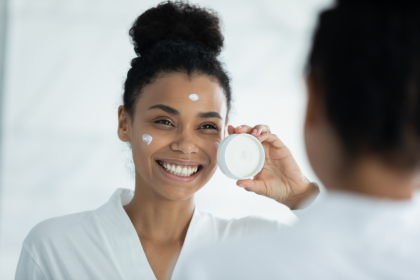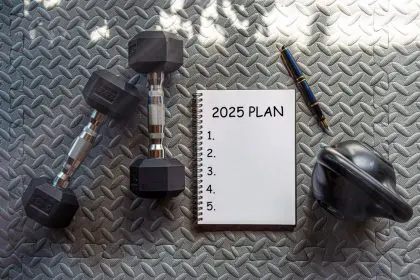Your face is equipped with an intricate network of tiny vessels that most people never think about, yet this hidden system has more influence over how you look than expensive serums or trendy treatments. Your lymphatic system is like your face’s personal maintenance crew, working around the clock to remove waste, reduce puffiness, and keep your skin looking fresh and healthy.
The problem is that this drainage system can easily become sluggish or blocked, especially with our modern lifestyle of staring at screens, sleeping poorly, and dealing with chronic stress. When your facial lymphatic flow slows down, waste products and excess fluid start accumulating in your tissues, creating that puffy, tired look that no amount of concealer can hide.
Facial massage isn’t just a relaxing spa treatment or beauty trend. It’s actually a scientifically-backed method for stimulating your lymphatic system and helping your face’s natural drainage processes work more efficiently. Understanding how this system works can transform not just how your skin looks, but how it functions at a cellular level.
Your lymphatic system is like a microscopic river network
Think of your lymphatic system as a complex network of tiny rivers and streams flowing throughout your face and neck. These vessels carry lymph fluid, which is essentially your body’s cleanup crew in liquid form. This fluid picks up cellular waste, excess water, toxins, and immune cells, then transports them to lymph nodes where they can be processed and eliminated.
Unlike your circulatory system, which has your heart as a powerful pump, your lymphatic system relies on muscle contractions, gravity, and external pressure to keep fluid moving. This is why lymphatic flow can become sluggish so easily, especially in areas like your face where there’s less muscle movement throughout the day.
Your facial lymphatic vessels are particularly delicate and close to the surface, making them both more susceptible to congestion and more responsive to gentle external stimulation. The lymph nodes in your neck, behind your ears, and under your jaw act as filtration stations where waste gets processed before being eliminated from your body.
When this system is working efficiently, your face looks sculpted, your skin appears bright and clear, and puffiness is minimal. When it’s sluggish, you get that bloated, tired appearance that makes you look older and less vibrant than you actually feel.
Modern life creates perfect conditions for lymphatic congestion
Your facial lymphatic system wasn’t designed to handle the conditions of modern life. Spending hours hunched over computers, sleeping on high pillows, chronic dehydration, and constant stress all interfere with healthy lymphatic drainage and create the perfect storm for facial puffiness and skin problems.
When you’re constantly looking down at screens, gravity works against lymphatic drainage, causing fluid to pool in your lower face and creating jowls and double chins that weren’t there before. Poor posture also compresses the lymph nodes in your neck, creating bottlenecks that prevent efficient drainage.
Chronic stress increases inflammation throughout your body, including in your lymphatic vessels. This inflammation makes the vessels less efficient at moving fluid and can cause them to become temporarily blocked or sluggish. The result is increased facial puffiness and a dull, congested appearance.
Dehydration paradoxically makes lymphatic congestion worse because your body holds onto whatever fluid it has, including in your facial tissues. Sleep deprivation compounds this problem by interfering with your body’s natural overnight repair and drainage processes.
Gentle pressure creates powerful drainage effects
The science behind facial massage lies in understanding how gentle, rhythmic pressure can stimulate lymphatic flow without overwhelming the delicate vessels. Lymphatic vessels have thin walls and are easily compressed, so the pressure used in lymphatic massage needs to be much lighter than what you might use for muscle tension.
The key is using pressure that’s just enough to compress the lymphatic vessels without collapsing them completely. This creates a pumping action that helps move stagnant lymph fluid toward the drainage points in your neck and jawline. The pressure should feel like a gentle stretch of the skin rather than deep tissue manipulation.
Direction matters enormously in lymphatic massage because lymph fluid only flows in one direction toward your lymph nodes. Massaging against this natural flow pattern can actually make congestion worse by pushing fluid away from drainage points. Understanding the correct direction for each area of your face is crucial for effective results.
The rhythmic, wave-like motions used in proper lymphatic massage mimic the natural contractions that healthy lymphatic vessels make when they’re functioning optimally. This gentle stimulation helps retrain your lymphatic system to work more efficiently on its own.
Your face has specific drainage highways that need attention
Your facial lymphatic system follows predictable pathways that are like highways for fluid drainage. The forehead drains toward your temples, the cheeks drain toward your ears, and everything ultimately flows down toward the lymph nodes in your neck. Understanding these pathways allows you to work with your body’s natural drainage patterns rather than against them.
The area around your eyes is particularly important because the lymphatic vessels here are extremely delicate and easily congested. This is why eye puffiness is often the first sign of lymphatic sluggishness. Gentle massage around the orbital bone can help reduce under-eye bags and dark circles by improving fluid movement in this sensitive area.
Your jawline contains several important lymph nodes that act as major drainage points for your entire face. When these nodes become congested, it creates a backup effect that can cause puffiness throughout your lower face and neck. Specific techniques that target these drainage points can have dramatic effects on overall facial appearance.
The connection between facial lymphatic drainage and neck positioning is often overlooked but extremely important. Poor neck posture can create compression that blocks drainage even when you’re doing everything else correctly.
Timing and technique determine massage effectiveness
The timing of your facial massage can significantly impact its effectiveness. Your lymphatic system is most active during certain parts of the day and responds differently depending on your body’s natural rhythms and current state of hydration and stress.
Morning facial massage can be particularly effective because your lymphatic system slows down during sleep, often leading to overnight fluid accumulation. Gentle massage upon waking helps jump-start your drainage system and reduce morning puffiness before it sets in for the day.
The duration of massage matters more than intensity. Lymphatic stimulation works best with sustained, gentle pressure over several minutes rather than brief, intense manipulation. This gives your lymphatic vessels time to respond and begin moving fluid more efficiently.
Temperature can enhance lymphatic massage effectiveness. Cool temperatures help constrict blood vessels and reduce inflammation, while gentle warmth can help relax tissues and improve fluid movement. Using tools like jade rollers or gua sha stones can provide consistent pressure and temperature benefits.
Consistency is perhaps the most important factor in seeing results from lymphatic massage. Your lymphatic system responds to regular stimulation by becoming more efficient over time, but this adaptation process requires consistent practice rather than occasional intensive sessions.
Tools and techniques that actually make a difference
While you can perform effective lymphatic massage with just your hands, certain tools can enhance the benefits by providing consistent pressure and helping you maintain proper technique. Jade rollers, rose quartz rollers, and gua sha tools have become popular because they can help you apply the right amount of pressure in the correct directions.
The key to using these tools effectively is understanding that they’re not meant to be pressed firmly into your skin. Instead, they should glide smoothly across your face with just enough pressure to engage the lymphatic vessels beneath the surface. The rolling or scraping motion should feel soothing rather than intense.
Dry brushing techniques adapted for facial use can also stimulate lymphatic flow. Using a soft, natural bristle brush with light, upward strokes can help move lymph fluid toward drainage points while also providing gentle exfoliation benefits.
The most effective techniques combine multiple approaches: starting with gentle manual massage to warm the tissues, followed by tool-assisted drainage movements, and finishing with specific pressure point stimulation at major lymph node locations.
Measuring real results from lymphatic face massage
Unlike many beauty treatments that promise immediate but temporary results, lymphatic facial massage creates changes that build over time and can be objectively measured. Reduced morning puffiness, improved skin texture, and more defined facial contours are all measurable outcomes of improved lymphatic function.
Taking progress photos can help you track subtle changes that happen gradually over weeks of consistent practice. Focus on areas where you typically see puffiness or congestion, and photograph yourself at the same time of day under similar lighting conditions.
Pay attention to how quickly morning puffiness resolves after you wake up. As your lymphatic system becomes more efficient, you should notice that facial swelling decreases more rapidly and to a greater extent than before you started regular massage.
Skin clarity and brightness often improve with better lymphatic drainage because cellular waste and inflammatory compounds are being removed more efficiently. This can result in fewer breakouts, reduced skin sensitivity, and an overall healthier complexion.
The goal isn’t just cosmetic improvement but actual enhancement of your skin’s physiological function through better lymphatic flow, waste removal, and nutrient delivery to facial tissues.













